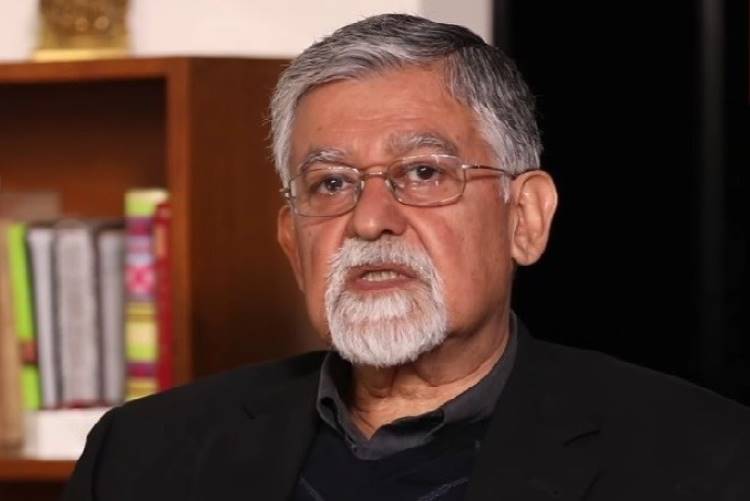Global development models often mirror Western ideologies, but India’s approach, the Bharatiya model, offers a unique perspective. This model is not just a blueprint for economic growth but a holistic framework for inclusive development. It is built on three fundamental pillars: the Indic market economy, Antyodaya empowerment, and macro pragmatism. Each of these elements represents a deep understanding of India’s diverse needs and a commitment to addressing them in a balanced and sustainable manner.
The Indic market economy is a concept that stands out for its recognition of the dynamic interplay between the government and the private sector. Unlike models that favour one over the other, the Indic approach seeks a harmonious balance. It acknowledges that both sectors have their strengths and weaknesses and that these can change over time. Therefore, the model is not static but continually adapts and evolves.
In practice, this means leveraging the market’s efficiency and the government’s regulatory oversight to achieve the best outcomes. This approach champions competitive markets to incentivise and discipline the private sector. It emphasises the importance of decontrol and bureaucratisation, making the case for a more open and competitive economy. The model encourages unbundling sectors like electricity to foster private competition while ensuring government intervention in areas where markets may fail. This nuanced approach avoids the ideological extremes of market fundamentalism or state control, seeking instead a practical, middle path.
READ I Electric Vehicles: Not-so-green path to sustainable mobility
Antyodaya empowerment
Antyodaya, meaning upliftment of the last person, is a concept deeply rooted in Indian ethos and forms the second pillar of this model. It recognises and addresses India’s incredible diversity, not just in terms of culture and language but also in socio-economic conditions. Unlike the European model, where different countries adopt different approaches, the Bharatiya model seeks to accommodate a wide array of diversities within a single nation.
This approach extends beyond financial handouts and looks at comprehensive empowerment. It aims to provide not just basic needs like sanitation and fuel but also opportunities for education, financial inclusion, and entrepreneurship. This inclusive approach ensures that no segment of the population is left behind, be it based on gender, caste, or socio-economic status. It is a model that strives for equality not just in opportunities but also in outcomes, recognising the unique challenges faced by different sections of society.
Macro pragmatism
The third pillar, macro pragmatism, is characterised by a non-ideological and adaptable approach to economic policy. This pillar embraces a wide array of economic theories – from classical to heterodox – and applies them as per the contextual needs of India. It is about understanding the unique historical, cultural, and economic contexts of India and applying economic theories that best suit these realities.
This pragmatic approach is evident in India’s policy reforms and institutional changes. During the pandemic, India’s targeted fiscal and monetary responses, as opposed to broad, undirected measures, exemplify this pragmatism. The focus has been on creating policies that work in practice, not just in theory. This approach is also visible in strategic industry policies and evolving trade policies, where the emphasis is on nurturing domestic industries while ensuring they remain globally competitive.
Bharatiya model envisions a developed India
Looking ahead, the Bharatiya model envisions India as a high-income country by 2050, with a quality of life comparable to Europe at the turn of the century. This ambitious goal requires sustained growth in per capita income and ensuring equality of opportunity for all citizens. Integral to this vision is the inclusion of women in the workforce and the leveraging of the digital economy to provide high-quality social services and to rapidly upgrade human resources.
The Bharatiya model, therefore, represents more than just an economic growth strategy. It embodies a vision for an inclusive, diverse, and balanced development path that respects India’s unique characteristics and challenges. It is a model that offers lessons not just for India but for the world, demonstrating how development can be inclusive, sustainable, and adaptive to the needs of a diverse population.
An interesting aspect of this model is the paradox it presents in terms of economic power and per capita income. By 2047, India aims to be one of the world’s top three economies, yet its per capita income rank may not reflect the same. This paradox arises from India’s large population, where even a lower per capita income can translate into significant economic power due to the sheer scale. It underscores the fact that economic power is not solely determined by per capita income but also by the size and potential of the population.
The Bharatiya model of inclusive development is a testament to India’s unique approach to growth and progress. It is a model that prioritises balance, inclusivity, and pragmatism, offering a distinct path to development that other nations can learn from. As India marches towards its ambitious goals for 2050, the world watches a unique experiment in inclusive development unfold, one that could redefine the paradigms of growth and prosperity in the 21st century.
(Dr Arvind Virmani is a full time Member of NITI Aayog. This article is the edited excerpt of Dr Virmani’s presentation on Bharatiya Model of development at an event organised in New Delhi by EGROW Foundation.)

